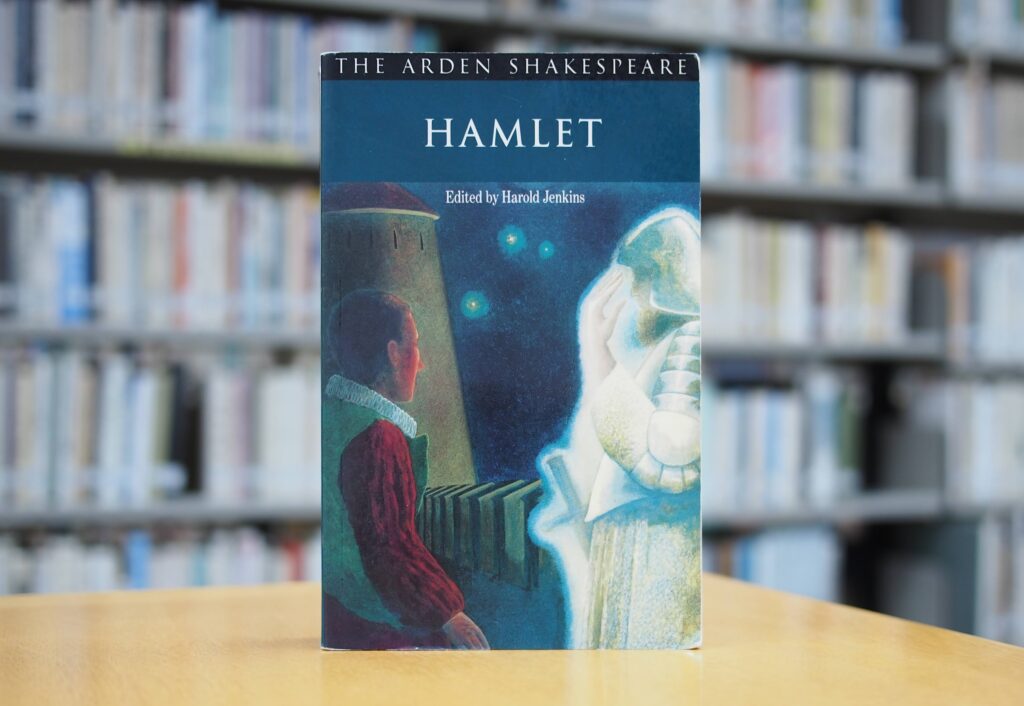
Associate Professor Takashi Nishi of the Faculty of Humanities specializes in Renaissance English literature, with a focus on Shakespeare. Using the research method of iconology, he examines the social and cultural backgrounds behind the works.
The Renaissance Humanist Erasmus’s book The Praise of Folly includes an intriguing illustration of the common people as a many-headed monster. What is the significance of this image?
As a student of literature, I approach this question from an iconological perspective, which examines the historical, cultural, and social contexts behind images. My focus is on literature from the Tudor and early Stuart periods in England, especially Shakespeare’s works.
The illustration in Erasmus’s book was created by Hans Holbein the Younger who served as a court painter to Henry VIII. The multiple faces represent the fickleness and instability of the common people, who are easily influenced by their emotions.
Iconology helps us to uncover the hidden meanings and intentions behind images—and it allows us to view the world from different angles.
Understanding the background adds depth to the work

Shakespeare’s time was marked by religious turmoil in Europe. In England, for instance, after breaking away from the Roman Catholic Church, the King established his own church. Religion was a highly sensitive topic that could endanger one’s life if discussed openly. However, some writers and artists managed to embed subtle hints of religious commentary in their works.
By understanding the historical background of this period, I aim to reveal both the conscious and subconscious intentions behind these works, and thus enhance my appreciation of them. This is one of the pleasures of studying literature for me.
Shakespeare avoided discussing religion openly, which could be one of the reasons why people still love his work. However, his language is full of unique and diverse vocabulary.
His English pronunciation and grammar are different from modern-day English, and even native speakers may find it challenging to comprehend. Yet, studying his rich linguistic world can be immensely gratifying.
During my time at an English university, I took a course on paleography. We analyzed letters from Elizabeth I and local histories, which were challenging to understand due to their distinctive language. Although learning to read old manuscripts is difficult, it can lead to new discoveries. My knowledge of contemporary printing techniques has also aided in comprehending diverse texts. For me, this is equivalent to basic research, which is why I continue to study it today.
Literature is colored by the times it was written in
Recently, I have broadened my research to encompass films related to Shakespeare. I analyze the director’s intentions through the camera angles used, compare multiple film adaptations of Hamlet, and have even taught Orson Welles’ Falstaff as a Faculty course.
Falstaff brings together several of Shakespeare’s history plays and comedies, with the screenplay a blend of actual Shakespeare quotes taken from different plays. In my course, I aimed to shed light on the significance of Welles’ screenplay, which turned out to be a fresh and innovative experience for my students.
I firmly believe that language cannot be “neutral,” as a speaker’s background and upbringing inevitably shape their words, reflecting their unique values.
What motivated the speaker to use these specific words? The study of literature seeks to uncover the deeper meaning behind the text, and I have no doubt that it can help us gain a better understanding of the society and times in which we live.
The book I recommend
“Hamlet”(The Arden Shakespeare)
by William Shakespeare, edited by Harold Jenkins, Bloomsbury Arden

The Arden Shakespeare edition is widely acknowledged as the authoritative edition of the poet’s works—and this is the second edition of Hamlet. As a third-year university student, I was first introduced to this book. It revealed to me how enjoyable it could be to carefully comprehend complex texts with the aid of a dictionary, and it also educated me about the principles of literary research.
-
Takashi Nishi
- Associate Professor
Department of English Literature
Faculty of Humanities
- Associate Professor
-
Associate Professor Takashi Nishi graduated from the Department of English Literature, the School of Literature, Aichi Prefectural University, completed the Doctoral Program in English and American Literature in Sophia University, and received his Ph.D. in English Literature from the University of London. Started working at the Center for the Teaching of Foreign Languages in General Education, Sophia University in 2001, before being appointed a full-time lecturer at the university’s Department of English Literature, the Faculty of Humanities in 2007. Assumed his current position in 2011.
- Department of English Literature
Interviewed: September 2022